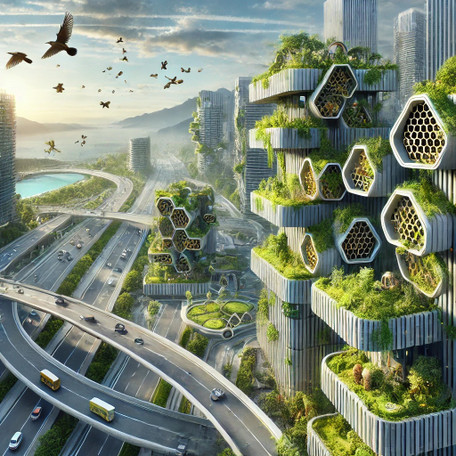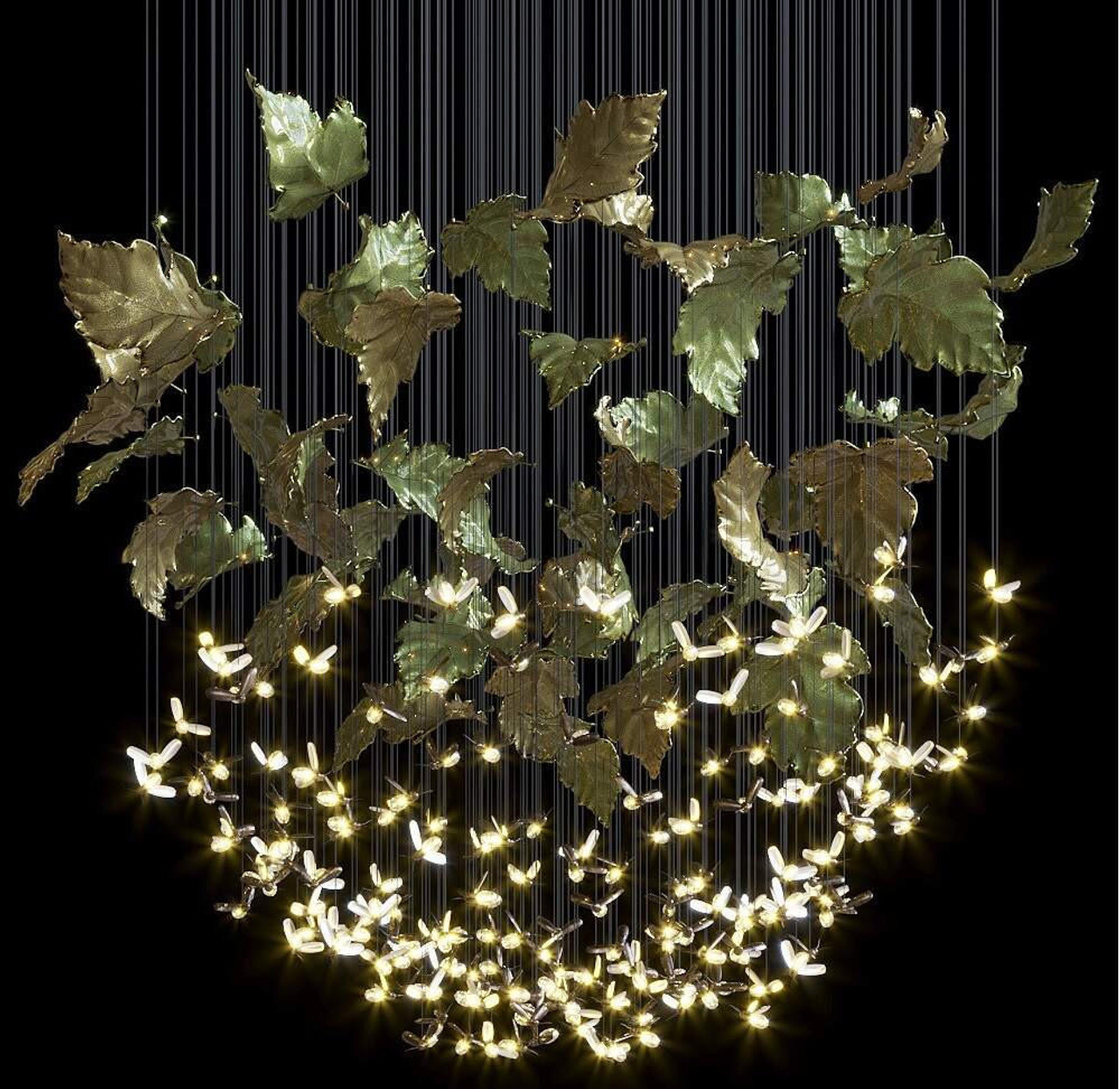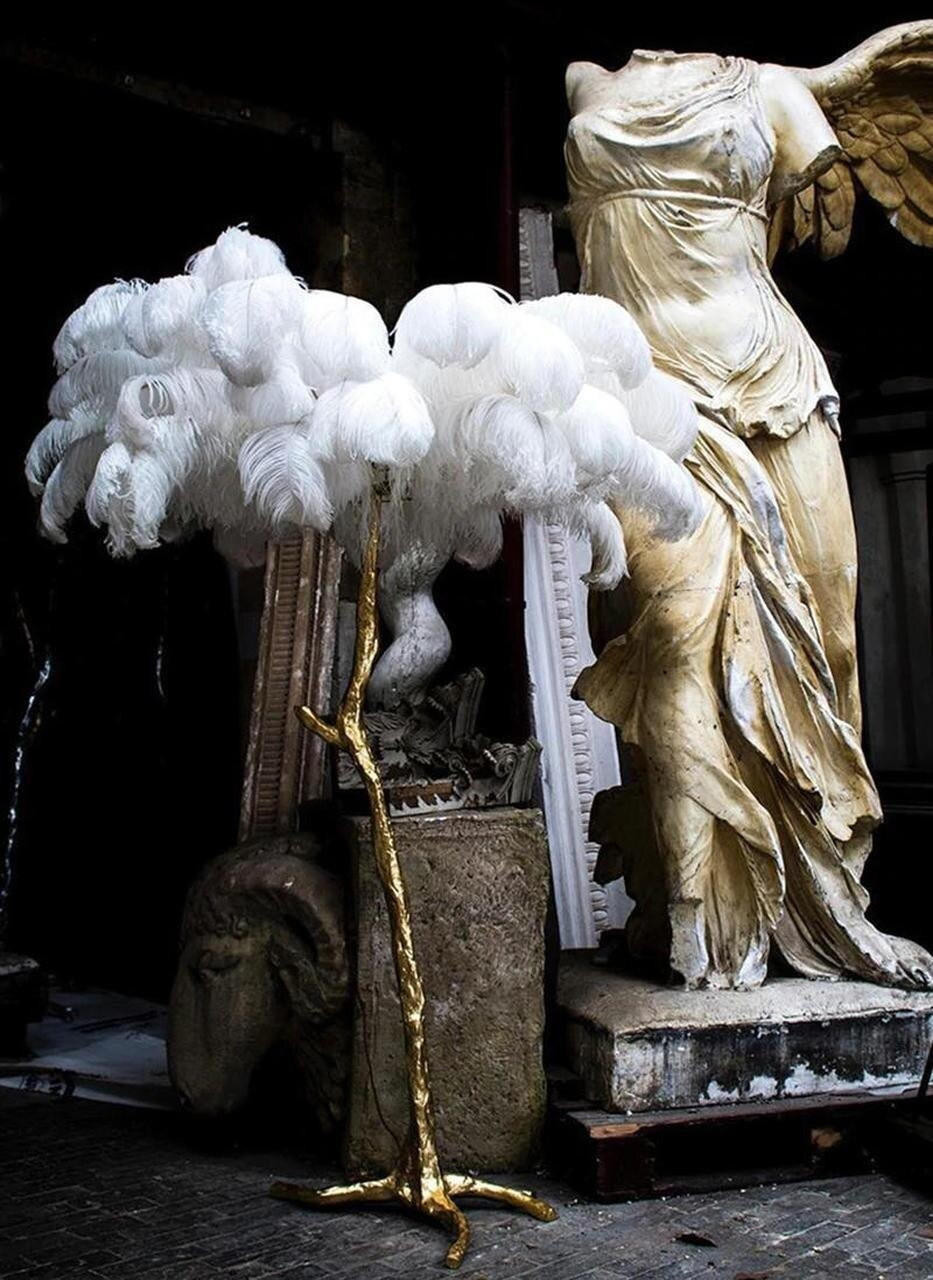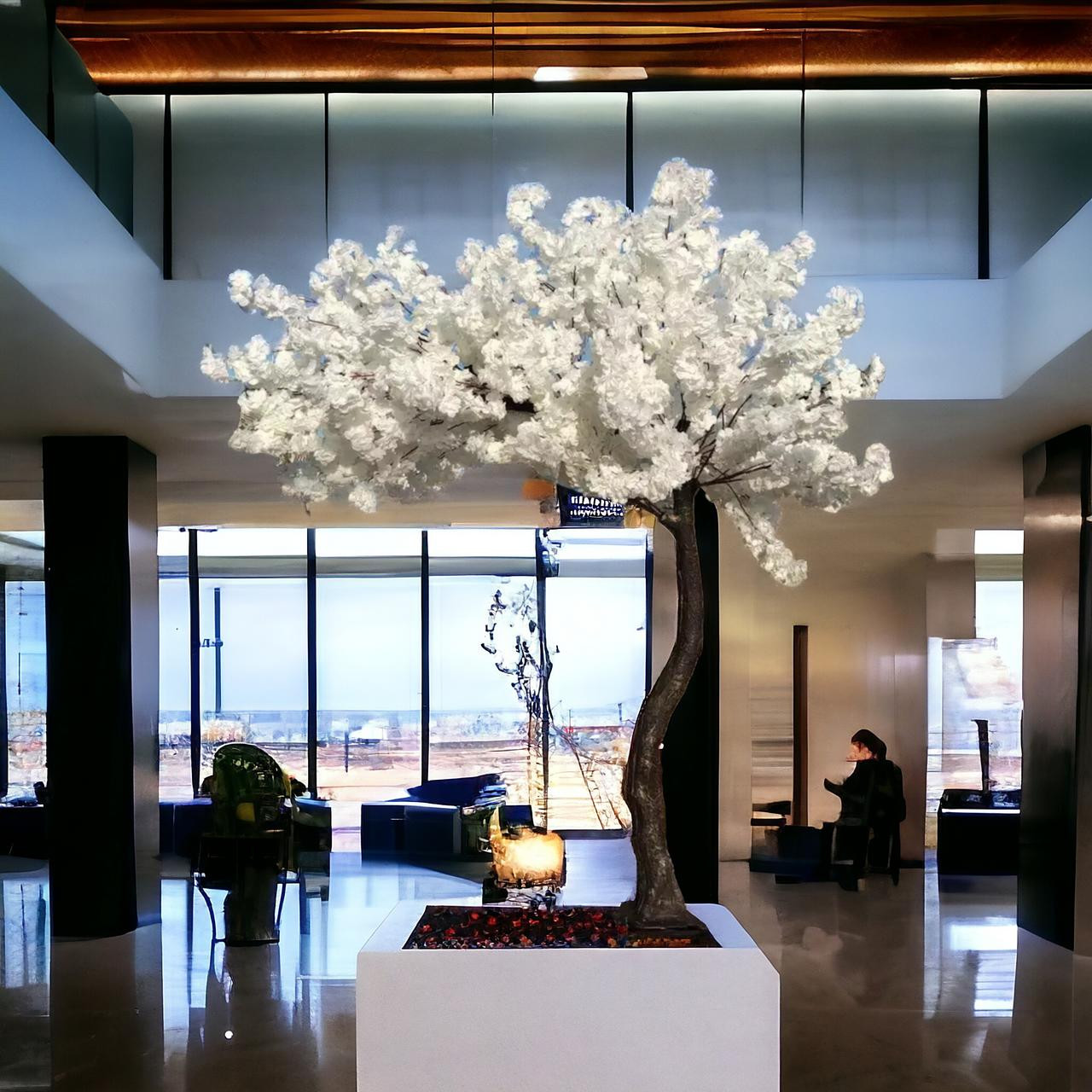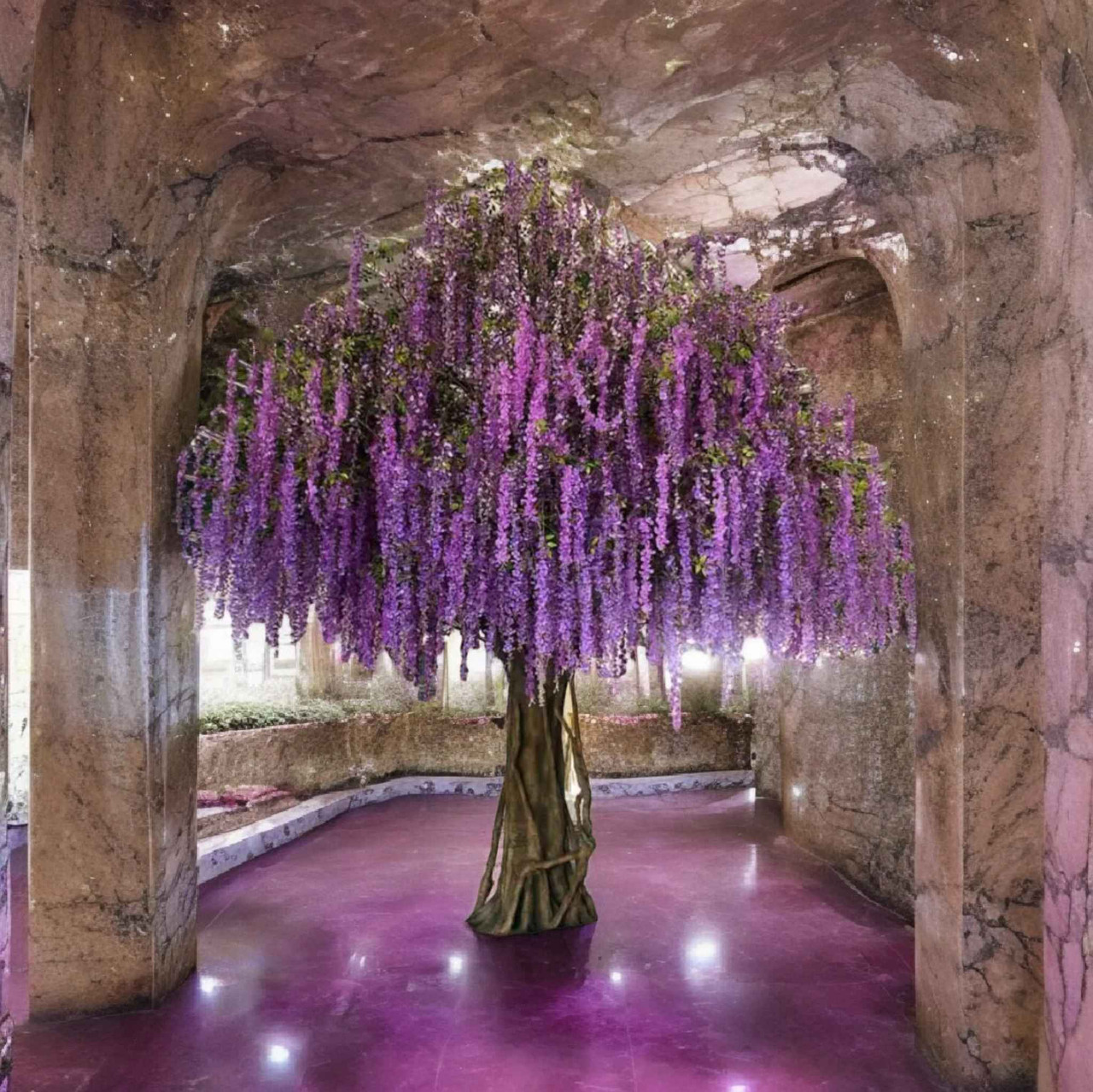Designing Architecture for Non-Human Species: Expanding Beyond Human-Centered Spaces
Posted by Bert Ron-Harding: Architectural Technologist on Sep 05, 2024
When we think about architecture, it’s easy to focus solely on the human experience. For centuries, our buildings, cities, and public spaces have been designed with human needs, desires, and habits in mind. Architecture has often been about improving the quality of human life—creating spaces that inspire us, comfort us, and meet our needs. But what if we broadened our perspective? What if architecture could transcend its traditional boundaries and start to serve not only human beings but also the myriad of species with whom we share the planet?
I believe that the next frontier in architecture involves designing not just for humans, but for all species. As architects, our responsibility extends beyond human-centered environments. It’s time to rethink the way we design buildings, cities, and landscapes by acknowledging the intricate ecosystems that surround us. In doing so, we can create environments that support not only human life but also the lives of birds, insects, mammals, marine life, and even microorganisms.
This is not merely an exercise in environmentalism or sustainability; it is a way to reimagine architecture’s role in the world and acknowledge that every design decision we make has far-reaching consequences for life beyond our own species.
Beyond Human-Centric Architecture
Architecture has historically been rooted in human functionality. A building is designed to shelter, to organize space, to inspire, and to enhance the way we live. The modernist movement, for example, was fundamentally about "form follows function"—buildings as machines for living in. This has served us well, but it has also led to a narrow understanding of the built environment, which often ignores or disrupts the ecosystems we inhabit.
In contrast, nature doesn’t operate in isolation. It’s a finely tuned system where every organism plays a part in a larger web of life. When we design for only one species—ourselves—we can unintentionally create environments that are hostile or damaging to the other creatures that share our spaces. Our cities can become wastelands for biodiversity, offering little in the way of habitat or resources for non-human life forms.
But it doesn’t have to be this way. Architecture has the power to restore balance. By expanding our design focus to include non-human species, we can create more harmonious environments that enhance biodiversity and, ultimately, improve the quality of life for humans and non-humans alike. After all, a healthier ecosystem is beneficial to all its inhabitants.
The Importance of Biodiversity in Design
Biodiversity is essential to the health of ecosystems. From pollinators that sustain our food supply to keystone species that maintain ecological balance, every species plays a crucial role in the web of life. As architects, we can either enhance or degrade biodiversity through our designs.
Take, for example, the urban environment. Cities are often seen as concrete jungles—spaces designed solely for human habitation, with little consideration for wildlife. But imagine if our cities were designed to accommodate not just people but also birds, bees, bats, and even fungi. What would that look like? How would our buildings change if we viewed them as part of a larger ecosystem, rather than isolated human creations?
Incorporating biodiversity into design means thinking beyond the human perspective. Green roofs and living walls, for example, provide habitat for insects and birds while simultaneously improving air quality and insulating buildings. Public parks and green spaces can be designed to attract pollinators, birds, and small mammals, creating urban oases that benefit both humans and wildlife.
But biodiversity doesn’t stop at plants and animals. The soil beneath our feet is home to millions of microorganisms that are vital to the health of ecosystems. A well-designed landscape can support soil health, promoting the growth of native plants and improving water retention. Even water systems, from streams to stormwater management, can be designed to support aquatic life and encourage biodiversity.
Designing for Non-Human Species
So how can architects begin to design with non-human species in mind? It starts with understanding the needs of the creatures we share our environments with. Just as we analyze the needs of human inhabitants when designing a building, we must consider the needs of birds, mammals, insects, and other species. This requires a deep understanding of the ecosystems we’re working within and a commitment to integrating ecological knowledge into our design process.
Birds and the Built Environment
Birds are perhaps the most visible non-human inhabitants of our cities, and yet urban environments can be hostile to them. Glass windows, for example, are a significant hazard for birds, causing millions of deaths each year. To address this, architects can incorporate bird-safe glass, which is designed to be visible to birds and prevent collisions. Additionally, integrating features like nesting boxes or perches into building facades can provide safe spaces for birds to nest and rest.
Green roofs and facades can also serve as important habitats for birds, offering food, shelter, and nesting opportunities. By designing buildings that support bird life, we can help maintain urban biodiversity while also creating a more pleasant environment for humans.
Insects: The Unsung Heroes
Insects are often overlooked in architectural design, but they play a vital role in ecosystems. Pollinators like bees and butterflies are essential for food production, while decomposers like ants and beetles help break down organic matter and return nutrients to the soil.
One way to support insect populations in urban areas is through the use of native plants. Native species provide food and habitat for local insects, ensuring that these vital creatures can thrive. Architects can work with landscape designers to incorporate native plants into urban green spaces, creating biodiverse environments that support insect life.
In addition, structures like "insect hotels" can be integrated into building designs. These small, sheltered spaces provide safe nesting sites for insects, helping to boost urban biodiversity. Insect hotels can be incorporated into green roofs, facades, or public spaces, adding an ecological function to the built environment.
Mammals and Urban Design
Urban environments can also be designed to support mammals, from small creatures like squirrels and bats to larger animals like foxes or even deer in suburban areas. Buildings can include features like bat boxes, which provide safe roosting spaces for bats, helping to maintain populations of these important nocturnal pollinators.
Public parks and green spaces can be designed to accommodate a variety of mammal species, offering food, shelter, and safe passage through urban areas. By creating green corridors that connect different habitats, architects and urban planners can help ensure that mammals can move safely through cities, avoiding roads and other human-made hazards.
Even the way we design lighting in urban environments can impact mammals. Many species are sensitive to artificial light, which can disrupt their natural behaviors. By designing lighting that minimizes light pollution, architects can create environments that are more hospitable to nocturnal animals.
Rethinking Water Systems
Water is an essential element of life, and yet many urban water systems are designed purely for human use, with little consideration for the ecosystems they impact. However, architects and planners can design water systems that support biodiversity and improve ecosystem health.
Stormwater management, for example, can be designed to support aquatic life. Instead of channeling water into concrete drains and pipes, cities can create naturalized stormwater systems that mimic the behavior of rivers and wetlands. These systems provide habitat for aquatic species, improve water quality, and reduce the risk of flooding.
Urban water features, like fountains or ponds, can also be designed to support biodiversity. By incorporating features like aquatic plants, fish, and amphibian habitats, architects can create water systems that are both beautiful and ecologically functional.
The Role of Technology in Ecological Architecture
Advances in technology offer exciting new opportunities for designing architecture that supports non-human species. Sensors and monitoring systems can help architects track the health of ecosystems, providing real-time data on everything from air quality to biodiversity levels.
For example, green roofs can be equipped with sensors that monitor soil moisture and plant health, ensuring that the roof remains a thriving habitat for wildlife. Similarly, buildings can be outfitted with systems that monitor bird collisions or insect activity, allowing architects to adjust designs to better support these species.
In addition, new materials and construction techniques offer the potential to create buildings that are more environmentally friendly and supportive of biodiversity. For example, biomimetic materials—materials that mimic the properties of natural systems—can be used to create building facades that support plant growth or provide habitat for insects and birds.
A New Paradigm for Architecture
Designing for non-human species requires a shift in mindset. As architects, we are used to thinking about buildings as isolated structures, designed primarily for human use. But buildings are not islands; they are part of a larger ecosystem. Every building we design has an impact on the environment, and we have the opportunity—and the responsibility—to make that impact a positive one.
By expanding our focus beyond human-centered design, we can create buildings and cities that support biodiversity, improve ecosystem health, and create more harmonious environments for all species. This is not about sacrificing human comfort or functionality; rather, it is about recognizing that we are part of a larger web of life and designing spaces that reflect that reality.
In the future, I believe that architecture will not just be about creating spaces for humans to live and work, but about creating environments where all species can thrive. By embracing this new paradigm, we can design a world that is more beautiful, more sustainable, and more connected to the natural world.
Real-World Examples of Architecture Designed for Non-Human Species
As the movement to integrate non-human species into architectural design gains momentum, several real-world examples demonstrate how architects are already addressing the needs of diverse ecosystems. These projects showcase innovative approaches to creating spaces that harmonize human use with the needs of wildlife, offering a glimpse of what’s possible when we expand the boundaries of traditional architecture.
1. Beehives in the City: Copenhagen’s Rooftop Bee Habitats
In Copenhagen, urban beekeeping has become a popular way to support pollinator populations that are critical to biodiversity. Many modern buildings in the city incorporate rooftop beehives as part of a broader initiative to help pollinators thrive in urban environments. These bee habitats are integrated into green roofs that provide foraging areas for bees, using native plants that support local ecosystems.
One notable example is the Axel Towers, a mixed-use development in the heart of Copenhagen. The building’s rooftop features a garden designed to attract pollinators, including bees, butterflies, and other insects. In addition to improving the biodiversity of the area, these green roofs offer insulation, reduce stormwater runoff, and create green spaces for building occupants to enjoy.
The inclusion of beehives in architectural design demonstrates how cities can play an active role in restoring and protecting pollinator populations, which are crucial for maintaining plant diversity and food security.
2. The Bosco Verticale: Vertical Forests in Milan
One of the most iconic examples of designing architecture for non-human species is the Bosco Verticale (Vertical Forest) in Milan, Italy. Designed by Stefano Boeri Architetti, this pair of residential towers is home to over 20,000 trees, shrubs, and plants that grow on the buildings’ balconies and terraces. The plant life, which is carefully selected to attract birds and insects, forms a self-sustaining ecosystem within the city.
The Bosco Verticale provides habitats for birds and insects, contributing to urban biodiversity while also offering several environmental benefits, including improved air quality, noise reduction, and natural cooling. The trees and plants absorb carbon dioxide, filter pollutants, and produce oxygen, creating a healthier urban environment for both human and non-human inhabitants.
This project illustrates the potential of integrating nature directly into the built environment, demonstrating how architecture can contribute to creating habitats for wildlife even in densely populated urban areas.
3. Animal Bridges: The Netherlands’ Eco-Corridors
The Netherlands is renowned for its commitment to ecological sustainability, and one of the country’s most innovative contributions to wildlife-friendly architecture is the design of eco-corridors—specially designed bridges and tunnels that allow wildlife to safely cross human infrastructure like roads, railways, and canals.
One of the most famous examples is the Natuurbrug Zanderij Crailoo, a wildlife overpass near Hilversum that stretches more than 800 meters across a highway, a railway, and a sports complex. This eco-corridor connects two large nature reserves, allowing animals like deer, wild boars, and smaller mammals to move freely between habitats without encountering human infrastructure.
These wildlife bridges are designed with native vegetation, water sources, and safe passageways that mimic the animals' natural environment. By creating these safe crossings, the Netherlands is preserving biodiversity and mitigating the fragmentation of habitats caused by urban development.
4. The Eden Project: A Living Classroom in Cornwall
The Eden Project in Cornwall, UK, is a world-famous example of architecture designed with ecosystems in mind. Built inside a former clay mine, the Eden Project consists of two massive biomes—one representing a rainforest ecosystem and the other a Mediterranean ecosystem—along with outdoor gardens that support native plant species.
The architecture of the Eden Project is designed to minimize environmental impact while maximizing biodiversity. Each biome houses thousands of plant species from around the world, many of which are rare or endangered. In addition to the plant life, the Eden Project supports a variety of bird, insect, and amphibian species that thrive in these carefully managed ecosystems.
The Eden Project not only demonstrates how architecture can support biodiversity but also serves as a living classroom, educating visitors about the importance of preserving the planet’s ecosystems. Its design integrates sustainable building practices with ecological stewardship, providing a model for future projects that aim to blend architecture with nature.
5. Bat-Friendly Bridges: Austin’s Congress Avenue Bridge
In Austin, Texas, the Congress Avenue Bridge has become famous for its bat colony, which consists of over 1.5 million Mexican free-tailed bats. While the bridge was not originally designed with bats in mind, its structure—specifically the crevices between its support beams—provides an ideal habitat for the bats to roost.
Recognizing the importance of these bats to the local ecosystem, the city of Austin has embraced the bat colony, incorporating it into the bridge’s design and management. The bats provide natural pest control by consuming large numbers of insects, benefiting local agriculture and reducing the need for pesticides.
The Congress Avenue Bridge shows how even existing infrastructure can be adapted to support non-human species. By understanding the habitat needs of wildlife, architects and urban planners can create or modify spaces that offer refuge for animals, birds, and insects, turning human structures into multifunctional ecosystems.
6. Living Building Challenge: The Bullitt Center, Seattle
The Bullitt Center in Seattle is one of the world’s greenest commercial buildings and an example of how architecture can support both human and non-human species. Designed to meet the Living Building Challenge, the Bullitt Center incorporates sustainable design features that promote ecological balance.
The building’s green roof is home to native plant species that support pollinators and provide habitat for birds and insects. The water system is designed to mimic natural hydrological cycles, capturing rainwater and treating it on-site before returning it to the environment.
The Bullitt Center’s approach to sustainability goes beyond energy efficiency; it focuses on creating an environment that benefits the surrounding ecosystem. By integrating natural processes into the building’s design, the Bullitt Center demonstrates how architecture can coexist with the natural world rather than dominating it.
7. Raven Row: Bird-Friendly Architecture in London
Raven Row, a contemporary art gallery in London, was renovated with a focus on sustainability and biodiversity. The building incorporates several design elements that benefit local bird populations, including nesting boxes integrated into the façade and green spaces that provide food and habitat for birds and insects.
The project highlights the importance of small-scale interventions in urban environments. By incorporating bird-friendly features into the architecture, the gallery has contributed to the local ecosystem, supporting urban wildlife in a densely built area.
8. Green Walls in Singapore’s Changi Airport
Singapore’s Changi Airport is known for its innovative use of greenery throughout its terminals. The Green Wall in Terminal 3 is a vertical garden that spans five stories, featuring over 25,000 plants from around the world. This living wall not only improves air quality and creates a calming atmosphere for travelers, but it also supports biodiversity by providing a habitat for insects and birds.
Changi Airport’s green spaces, including its famous Jewel Rain Vortex, demonstrate how large-scale infrastructure projects can integrate nature into their design. By prioritizing biodiversity and sustainability, the airport offers a model for future transportation hubs that seek to harmonize with the natural environment.
The Future of Designing for Non-Human Species
As these real-world examples demonstrate, architecture that considers the needs of non-human species is not only possible but increasingly necessary. The projects highlighted here offer a glimpse into a future where buildings, bridges, and public spaces are designed with biodiversity in mind.
To move forward, architects must collaborate closely with ecologists, biologists, and environmental scientists to understand the needs of different species and ecosystems. This interdisciplinary approach will enable architects to create designs that are not only functional for humans but also supportive of the natural world.
Designing for non-human species requires a shift in perspective—a recognition that humans are not separate from nature but are part of it. By expanding the scope of architecture to include non-human species, we can create spaces that foster harmony between built environments and the ecosystems they inhabit.
This new paradigm of architecture challenges us to think beyond human needs and consider the broader impact of our designs on the planet. It offers an opportunity to reimagine how we live, work, and build—an opportunity to create a more biodiverse, sustainable, and interconnected world.
Conclusion
As we move forward into an era where environmental concerns are at the forefront of global consciousness, architecture must evolve to reflect this new reality. Designing for non-human species is a crucial step in creating a more sustainable, resilient, and biodiverse world. By integrating ecological principles into our designs and considering the needs of all species, not just humans, we can create spaces that enhance life in all its forms.
This is the architecture of the future—an architecture that goes beyond human needs and desires, expanding our vision to include the entire web of life. The time has come to rethink the way we design, to embrace the interconnectedness of all species, and to create environments that support the rich biodiversity of our planet.

